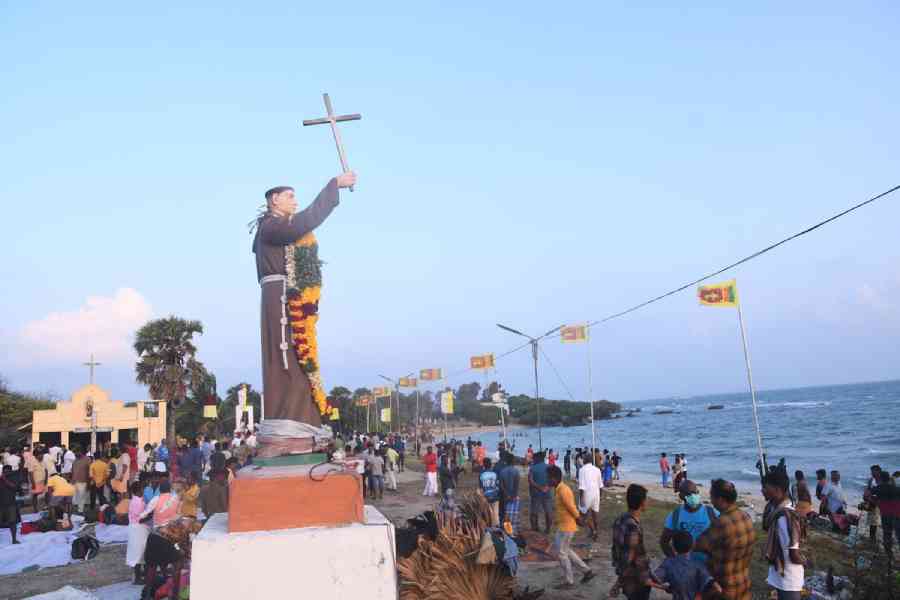The uninhabited island of Katchatheevu in the Palk Strait has become the new arrow in the BJP’s quiver ahead of the Lok Sabha elections.
Located around 22km from the Rameswaram lighthouse in Tamil Nadu and to the southwest of Sri Lanka’s Jaffna, the island’s only permanent structure is St Anthony’s Church whose three-day annual festival attracts Catholics from both countries. There is no source of freshwater here, and hence no permanent inhabitants.
An island named Kacci is mentioned in the Rameshwaran inscription of King Nissanka Malla who ruled Polonnaruwa (in modern-day Sri Lanka) in the 12th century. Other sources attribute the origins of the 115-hectare island to a volcanic eruption in the 14th century.
In 1920, a dispute over the island arose between the British colonies of India and Ceylon. While India claimed that the island was under the control of the Raja of Ramnad in India, Ceylon — later renamed Sri Lanka — claimed that the Portuguese had occupied the island from 1505 to 1658. The Dutch succeeded the Portuguese before finally relinquishing the sovereignty of Ceylon to the British.
Sri Lanka assumed full control of the island after an agreement with India in 1974. Another agreement in 1976 gave India control of the Wadge Bank— a submarine plateau rich in marine life and probably hydrocarbon fuel — off the coast of Kanyakumari.
Tamil fisherfolk of both countries have traditionally used the Katchatheevu island to dry their nets.
The row over the island, which has been a political issue in India since 1974, was exacerbated during Sri Lanka’s civil war from 1983 to 2009. Laws passed in Sri Lanka in 1983 and 1985 placed further restrictions on fishing in these waters.
After the intervention of the Indian Peace Keeping Force in the war ended, then Tamil Nadu chief minister Jayalalithaa in 1991 demanded that the island be retrieved or leased to India in perpetuity.
As India’s fishing industry developed faster than Sri Lanka, which was in the throes of war, Indian fishing vessels began to go further into Sri Lankan waters. This was resented by Sri Lankan fishermen. As the civil war came to an end, the Sri Lankan navy turned its focus on preventing smuggling and what it saw as the unauthorised entry of Indian fishermen into its waters.
On Monday, external affairs minister S. Jaishankar told reporters: “In the last 20 years, 6,184 Indian fishermen have been detained by Sri Lanka and 1,175 Indian fishing vessels have been seized, detained or apprehended by Sri Lanka.”
Hundreds of Indian fishermen have been killed so far, making it an emotive issue across the state, especially in the 15 Lok Sabha seats on the coast where fisherfolk are a major vote bank.
During the previous Lok Sabha campaign, fishermen in Ramanathapuram — present-day Ramnad — waved black flags at Prime Minister Narendra Modi when he visited the town for a rally. They urged him to put an end to arrests and killings of Indian fishermen by the Sri Lankan Navy.
The retrieval of Katchatheevu has been a key aspect of this demand for justice — of which the Dravidian parties have been the strongest proponents so far.










